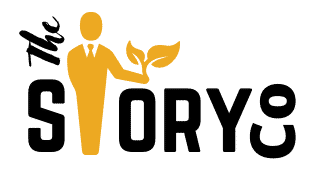While storytelling is extremely subjective, there are certain steps that can help you add storytelling fundamentals to everyday conversations and even professional communication. Here is a quick guide.
Have you ever sat through boring presentations and then suddenly when one of the team members shared insights from a personal experience, your eyes simply lit up? Well, that’s the power of storytelling and this guide will help you utilize it.
Have you ever wondered about the secret behind your favourite film? How it reveals a story around the human truth and presents an insight like never before. Good stories cause an impact in terms of changing a person’s perspective. It plays a role in changing behaviour because we as humans, begin to romanticise and get inspired by anecdotes. A good story helps the audience escape into another world and the storyteller is their guide. Presenting to you, storytelling 101.
Keep reading and unravel this step-by-step guide to storytelling
- Embrace your own voice
The way your voice sounds is exactly how people remember you, it also adds a lot to your credibility. But before we dive into sounding confident with the delivery, it’s important to embrace the story. You truly need to believe in what your message is. When you have confidence in your story, all the doubts get eliminated because you have backed it with genuine experience and preparation.
- Understand your audience
When you are trying to acquaint yourself with the audience, build awareness of their interests, the level of understanding that they hold, and their attitude and belief systems. You can take interviews of people, distribute surveys, and review the work of others in the same field. The idea is to customize your story or rather pick a story that is the most relevant to your audience.
For instance, if you’re going to speak to college students on time management, it would make sense to tell them about the time you struggled with finishing a project on time rather than telling them a story of how you struggled with deadlines at work. You could also pepper the story with references of their favourite pop singer or K-Drama characters.
- Follow the three components
Character, conflict, and resolution are the three components of a good story. The main character of the story is called the ‘Protagonist’. The conflict in your story is meant to drive emotions and helps the audience connect to your experiences. Coming to the resolution, it need not be a happy ending but should give closure.
So, if you’re on a date and the agenda is to impress the other person, you can narrate the story of how once you helped a stray animal (provided you really did) and ended up befriending them. The protagonist here is you, the conflict would be the situation of the stray animal, and the resolution would be you helping them.
- Have your Call To Action in place
CTA refers to Call To Action and enables the user to take the desired action at the end of the story. Effective CTAs have strong verbs. For example – ‘Book your next adventure!’ Using a CTA eliminates decision fatigue for the audience. It eases the user journey by directing the audience; giving meaning to your story is the ultimate goal of a good CTA.
For instance, if you run a travel agency and are shooting out a mass mailer or writing a cold email, you could start with a story about how one of your elderly customers had the time of their life in a small village in Thailand. The CTA here would be to urge your potential consumers to reach out to you if they too want such a magnificent experience.
- Add personal touch
Beyond facts and theories, there’s always an element of mystery that only human emotions can solve. Sharing your personal stories adds an element of intimacy between you and the audience. They begin to relate to you on a human level and try to find themselves in your story. To make your story more personal, here are a few things that you can do:
- Describe the emotions you felt while narrating an incident. How sad you were when you first heard the news or how anxious it made you.
- Paint a picture for your audience – what kind of morning was it? What did you eat that day? What clothes were you wearing?
- Talk to them about the surroundings and not just the characters. For instance, how you could hear birds chirp in the background while you were conversing or how the chair you sat on had wooden and red in colour.
6. Observation is key
As a storyteller, build the habit of observing things around you using a small diary. To get deeper insights about people, interview them about questions of self. There will be multiple instances throughout the day but to bind them into storytelling, requires behavioral observation. Journal entries can also be counted as stories. Oprah Winfrey believes that “Keeping a journal will absolutely change your life in ways you’ve never imagined”
These were a few steps to make your story compelling. You can feel free to experiment and improvise. Following this storytelling guide will add more structure, emotion, and confidence for yourself as a storyteller.
For more interesting content from the world of storytelling, take a look at our blog.



